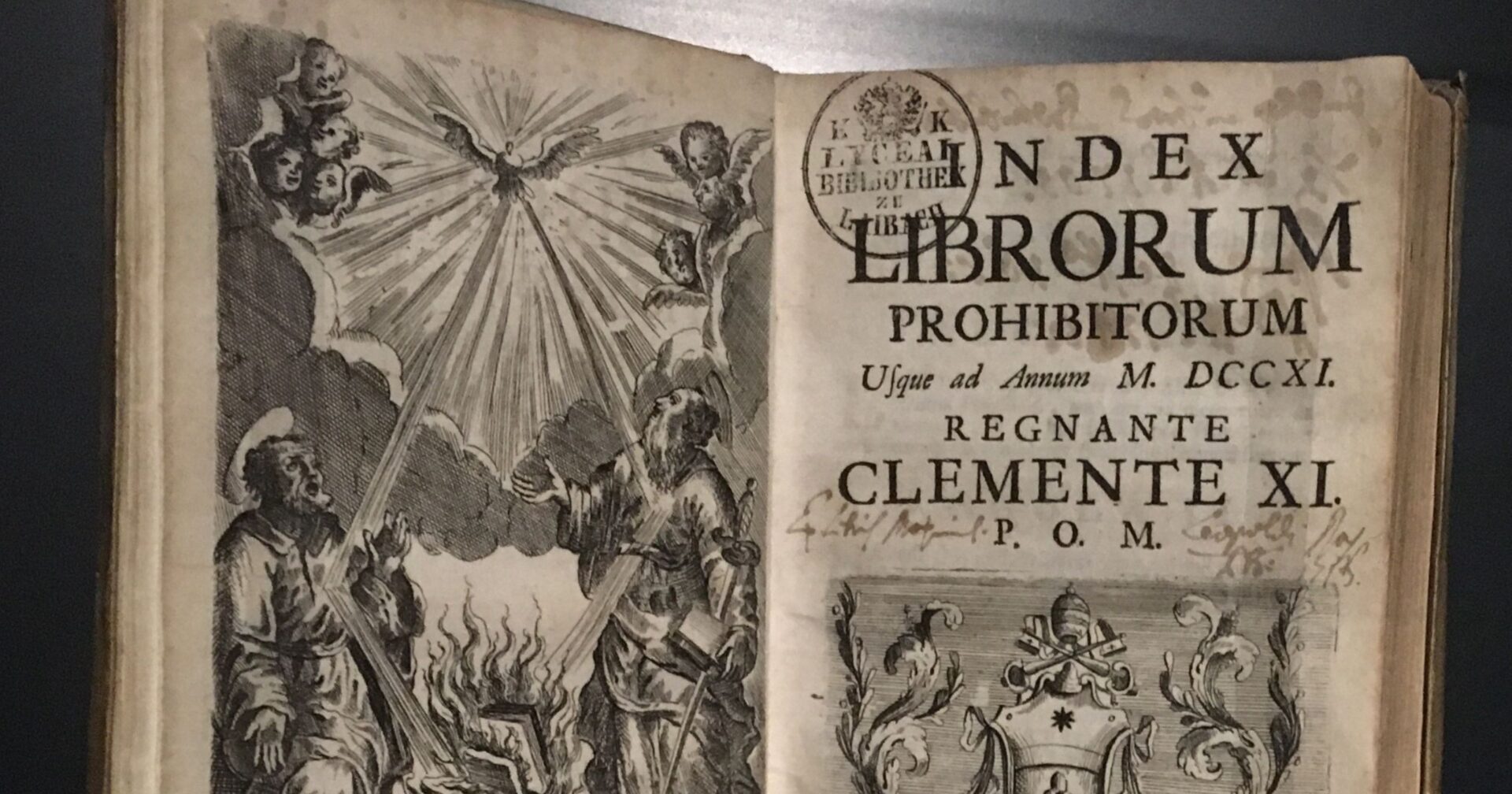Today, the Code of Canon Law requires a nihil obstat and imprimatur before any work “concerning sacred Scripture, theology, canon law, church history, or religious or moral subjects” can be published.
Just 71 years the ago the last edition of the Index Librorum Prohibitorum was published by the Church – literally a list of “prohibited” or banned books Catholics could not read save for a special dispensation.
With the invention of the printing press in 1440, heretical information could be disseminated more rapidly than ever before. Both Catholic – and Protestant – authorities reasoned that in a time of wars concerning religion that control of the press through a list of prohibited books was the only way to control the spread of heresy: enter the Index Librorum Prohibitorum.
The first versions of the Index Librorum Prohibitorum were published by local church officials in the Netherlands (1521), Venice (1543), and Paris (1551) before an official Roman publication came about.
In 1559, the first Roman Index was published under Pope Paul IV: it banned the entire corpus of 550 authors, along with individual titles by others. Its stated purpose was to safeguard the Faith and morals of Catholics by preventing them from reading books that were harmful theologically, culturally, or politically.
The Council of Trent revised the Roman Index after its first edition was deemed too severe, and thus the Tridentine Index was promulgated in 1564 under Pope Pius IV. It would form the basis of all future editions until 1897 when Pope Leo XIII published the Index Leonianus.
7 years later after the Tridentine Index, the Sacred Congregation of the Index was formed with the task of maintaining the list and investigating works accused of not being nihil obstat. The congregation met throughout the year to review works and determine whether they they needed to be revised or condemned completely.
Catholic authors would then have the opportunity to defend their writings and were given the opportunity to make corrections or deletions to avoid being placed on the list. The pope was then given the recommendations of the Congregation and ultimately had the final say in saying which works were on the Index or not.
The Index was enforced in the Papal States, elsewhere it was civilly adopted by Italian states. France had government officials produce their own, while Spain based their own off of the Roman version. Within the Holy Roman Empire, each German prince generally set up their own system.
In 1897, Pope Leo XIII published his updated, more sophisticated Index with the apostolic constitution Officiorum ac Munerum, which abolished the punishment by excommunication for reading prohibited works. The new version graded authors on a degree of toxicity, and critiqued specific passages for revision rather than condemning on the whole.
The last version was published in 1948 by the Holy Office (after it had absorbed the Sacred Congregation of the Index). The 20th and final edition contained nearly 4,000 titles for heresy, issues of morality, and sexual impropriety.
In December of 1965, Pope Paul VI issued the motu proprio Integrae servandae, reorganizing the Holy Office into the Congregration for the Doctrine of the Faith. Among the CDF’s competencies, the Index was not listed – effectively abolishing the list.
In June of 1966, the CDF confirmed by saying in a statement that while the last edition of the Index maintained its moral force in teaching Catholics its listed works could damage faith and morality, it no longer had any penalties under canon law.
Throughout the years, the Index featured works by Descartes, Calvin, Locke, Voltaire, Hume, Kant, Balzac, and others. Some authors were on the list but later taken off, like Copernicus, Kepler, Victor Hugo, and Galileo.
Photo credit: Drw1 via Wikimedia Commons















Does the Catholic Church support Steve Berry, author and his catholic novels or disagree with the content and printed factual statements from Steve? I am very curious about the Catholic Church and their agreement or disagreement of the scripture analysis of the NEW TESTAMENT writings in “The Templar Legacy.
Please respond from the Catholic understanding of his printing of the scriptures and Steve’s “factual” statements regarding the resurrection of Jesus Christ, scriptures from the disciples and the shroud of Torrin
Michael Surmeyer